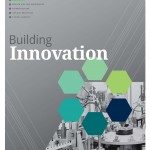 Exciting times for future innovations in the New Zealand meat industry. Callaghan Innovation, New Zealand’s new innovation organisation – named after the late Sir Paul Callaghan – opened and was officially launched last Friday in Auckland and Wellington.
Exciting times for future innovations in the New Zealand meat industry. Callaghan Innovation, New Zealand’s new innovation organisation – named after the late Sir Paul Callaghan – opened and was officially launched last Friday in Auckland and Wellington.
The new organisation will accelerate the commercialisation of New Zealand innovation, according to Science and Innovation Minister Steven Joyce.
“Callaghan Innovation will be a one-stop shop for business innovation support, whether it be in science, engineering, design or technology. It will be a high-tech HQ for New Zealand businesses,” he says.
Callaghan Innovation brings together the former crown research institute IRL, the Ministry of Business, Innovation and Employment (MBIE)’s business investments team, the Auckland Foodbowl and NZ Trade & Enterprise’s Lean Manufacturing programme. It will commence operations with 400 staff and offices in Auckland, Wellington and Christchurch.
The organisation will work across industries as diverse as food and beverage manufacturing, agri-tech, digital technologies, health technologies, therapeutics and high value wood products.
“The common theme is encouraging innovation and higher value products and services,” says Joyce.
The organisation is being led initially by acting chief executive Murray Nash. Over the coming months, the new Board of directors, chaired by Sue Suckling, will complete the appointment of a permanent chief executive and oversee the bedding in of the organisation’s operations in Auckland, Wellington and Canterbury. Other board members includer former Game Industry Board chief executive Richard Janes, currently an IRL board member, Auckland Transport director Paul Lockey and Dr Michele Alan. They are joined by new board members Robin Hapi, Professor Peter Hunter from Auckland University,Sir Peter Maire and Craig Richardson.
The news has been welcomed by an array of science leaders for its expected ability to boost private sector innovation.
Professor Shaun Hendy, President of the New Zealand Association of Scientists, commented that he thinks Callaghan Innovation will have to do two things to succeed.
“Firstly it must develop the science and technology that New Zealand’s manufacturing sector will need in the decades to come. As Sir Paul Callaghan pointed out in his book, Wool to Weta, New Zealand has not put enough effort into the science that underpins high-value manufacturing.Callaghan Innovation represents a great opportunity to close the knowledge gap between New Zealand and the other advanced economies.
“Secondly, the organisation needs to develop effective new ways of bringing together researchers, entrepreneurs and businesses. New Zealand doesn’t enjoy the benefits of agglomeration that Sydney or Tokyo do, so Callaghan Innovation will need to find scalable, smarter ways to make these connections. This will largely involve making better use of the information we already have about the innovation sector in New Zealand.
“We will be able to tell if Callaghan Innovation is on track in a year or two by whether it has been able to significantly grow the numbers of scientists and decrease the number of bureaucrats that work there,” says Hendy.
Callaghan Innovation is a key part of the Government;’s Business Growth Agenda and received funding in Budget 2012 of $166 million over four years.

